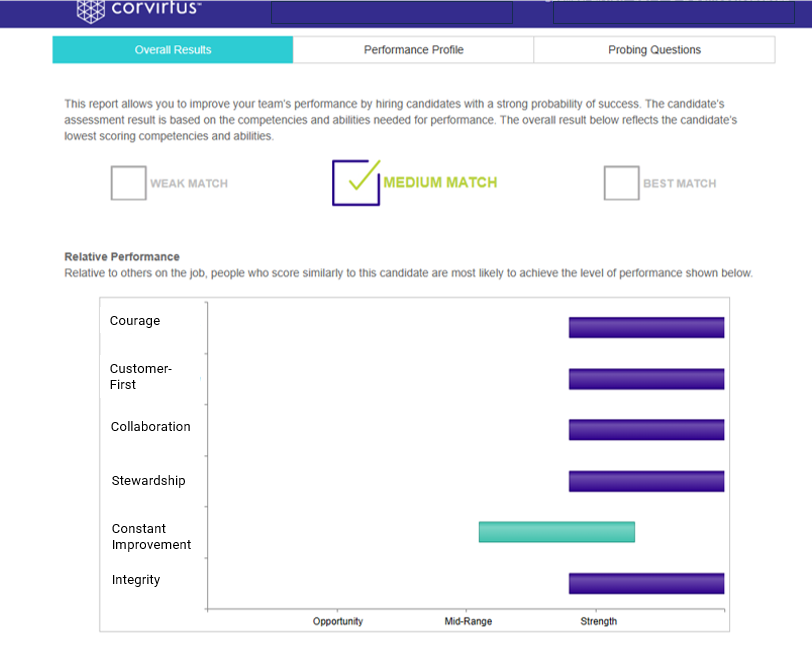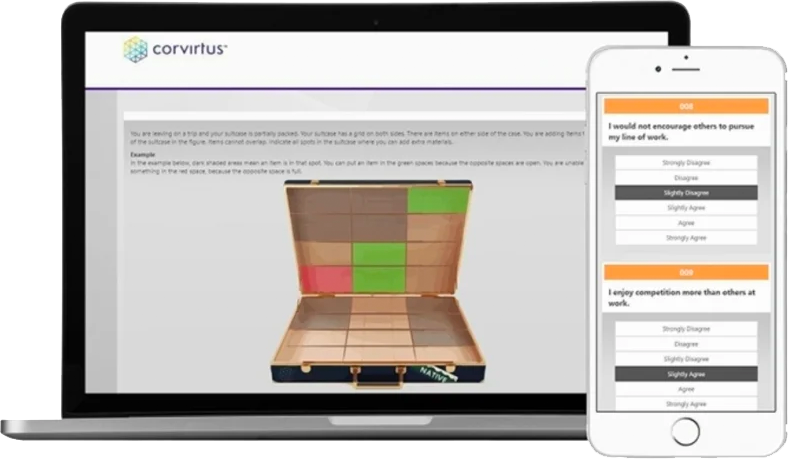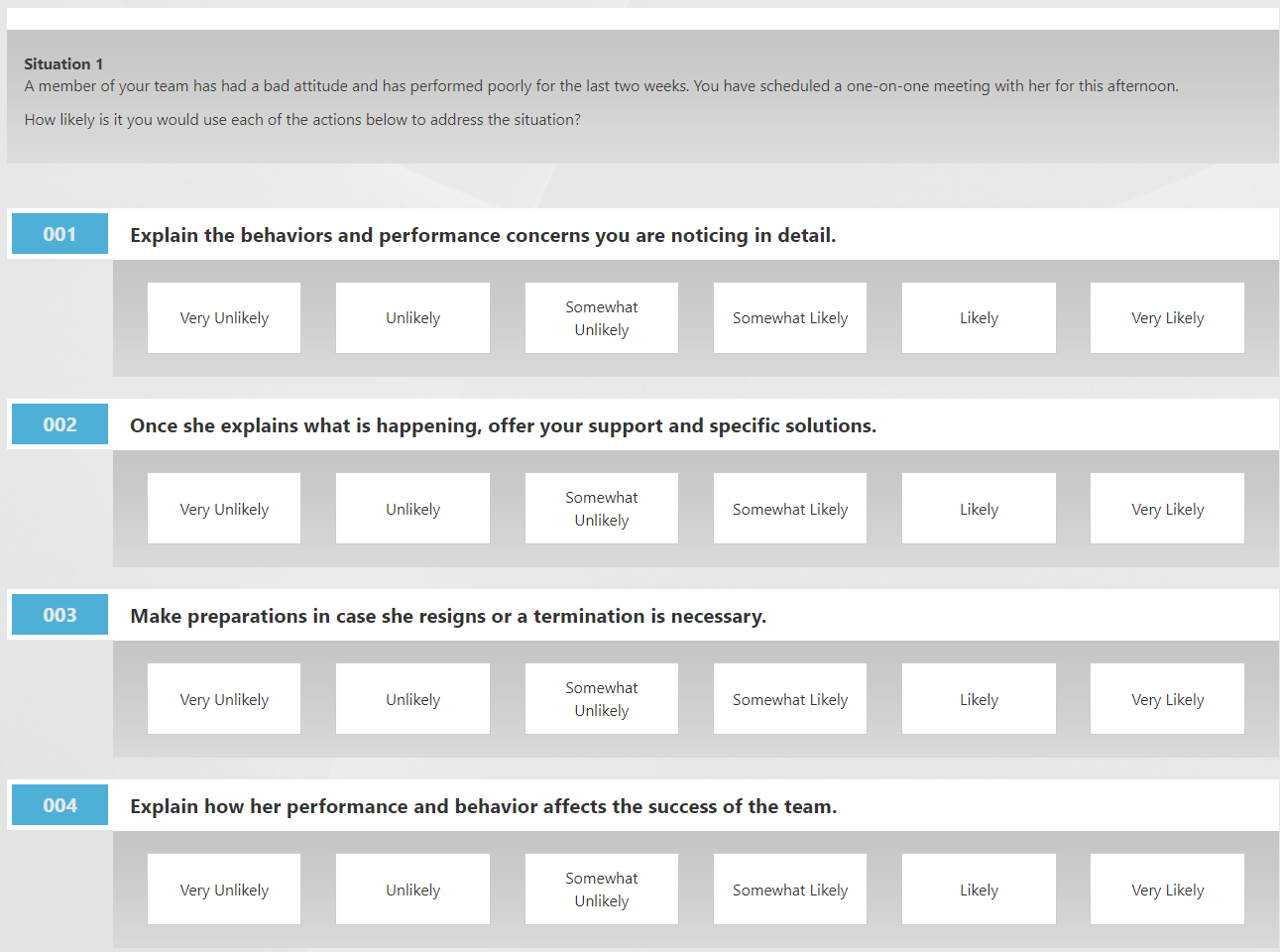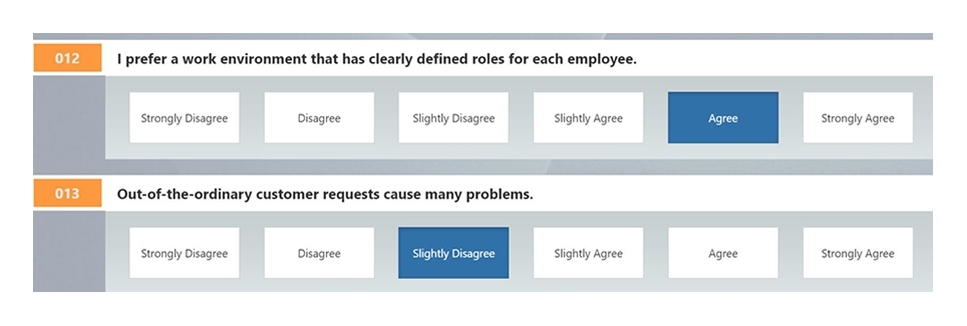Are hiring assessments as predictable as a toddler with a glitter bomb? We beg to differ: modern assessment tools, when wielded with purpose, slice through the chaos, making recruiting a smoother, more inclusive, and downright engaging experience for both employers and candidates.
Cover photo by No Revisions on Unsplash
Knowing how assessment tech in recruiting is changing is key — but reactions and attitudes to these tools and solutions are equally important. Reactions and adoption are key. Consider that:
- Over 40 percent of HR tech projects were either not fully successful or failed after two years
- Organizations believe the majority of this failure comes from a lack of expertise and understanding of the solution, process, and what it can achieve.
In short, human capital programs flourish or fail based on knowledge, or lack of it. As we talk about frequently, assessment tools for hiring, promotion, and development only drive change and results if they earn the commitment of everyone they affect.
And while any program casts effects across the entire organization, a particularly broad range of stakeholders is actively invested in hiring and promotion.
We have candidates (internal and external), a combination of recruiters, talent acquisition, and HR (depending on how hiring is structured), on top of a variety of leaders and teams directly affected by the hire. Trainers and training departments often join the mix if they are using reports to tailor the training experience and are responsible. The assessment cannot support success if it's poorly received by candidates, nor if reports aren't consulted and thoroughly used by managers.
That being said, in taking a look at what ranks on the first page of a Google search for hiring assessments recently, I found a candid reflection criticizing pre-employment assessments. Written by executive coach and podcast host, Jill Griffin, she criticizes assessments, arguing they damage the candidate experience while also posing a barrier to inclusivity, culture, and accurate hiring. Her piece is noteworthy because it captures common misconceptions and errors in implementation that will derail the success of assessment tools in recruiting as well as promoting and developing from within. That said, I'll walk through each of her points and share how intentional implementation and support (that meets the needs of all stakeholders) of job-related, validated assessments sustains success and not failure.
Misconception #1: A bad way to break the ice: assessments leave a poor first impression
Contrary to popular belief, assessments shouldn't be 'icky' as Ms. Griffins and many believe. For what it's worth I've also heard the word 'creepy' thrown in for good measure from well-intentioned family members in conversations about my profession.
Let's start from the applicant side. Think about a job or opportunity you deeply wanted the opportunity to earn. With the early stages of employment, we're often limited to a couple of boilerplate methods to communicate our strength and potential: the job application (highly structured and limited on what we can share), our resume (which we can personalize but can't make it too long, and perhaps a cover letter. Of course, we don't know if, and how, this content will be reviewed and judged, and recruiters and managers struggle with evaluating free-form content like resumes fairly and consistently.
In fact, the opposite of this misconception is true. Assessments transform the recruitment process by making it not only more efficient but consistent, and in so doing inherently fairer for all parties involved. Validated (i.e., empirically shown to predict performance) assessments, when properly designed and implemented, remove much of the guesswork and subjectivity that often accompanies hiring decisions. They provide candidates a with clear opportunity to share who they are as people and potential contributors. It can't be overstated, however, that for this to happen assessments must be job-related. Specifically, they must be specifically tailored to evaluate the skills, traits, and competencies that are critical for success in the specific role being filled. It's equally important that candidates see them as job-related. With that in place, we can create a stronger and more positive candidate experience.
That takes us to the assessment results. The metaphor about a tree falling in the woods and whether it makes a sound hits particularly well here. There are two key advantages here. First, by evaluating candidates on the qualities needed for performance, culture, and retention, we're equipped to target candidates that are most likely to deliver the intended results.

Second, we're able to improve the efficiency and quality of the next steps of the hiring process where we're investing more of our time, often in phone screens and first-round interviews. Reporting highlights areas, and potential questions, that are especially key to the candidate's ability to thrive. This allows us to evaluate work experience and other background details with those findings in mind.
Understanding a candidate's priorities, values, and approach to the role from just a resume and job application can be challenging, as we're trying to determine how their experience, the scope, and nature of which we cannot understand and filtered through our own perspective, relates to our own culture, job demands, and environment. Assessments, however, provide us with clear guidance on candidate potential for our culture and role.

Photo by Nathana Rebouças on Unsplash
Building assessment tools for recruitment
The first step in this process is to clearly your goals (retention, greater bench strength, performance goals) and then choose assessment and recruiting tools that support them by selecting those competencies.
Hiring and promoting based on competencies involves assessing the specific attitudes, behaviors, and skills that an ideal candidate must demonstrate in order to be successful on the job. These priorities should reflect the true demands and responsibilities of the role. Once these have been established, the next step is to match these criteria to the qualities that a candidate exhibits on a well-developed personality assessment. This involves selecting types of assessments that accurately measure the relevant attributes and provide insights into how well a candidate will fit into the role and the organization.
When executed correctly, this method significantly increases the odds of hiring the right person by ensuring that the candidate's capabilities and disposition align well with the job requirements and organizational culture. As a result, employers are not only able to identify candidates who possess the necessary skills and traits but can also foster a more inclusive and equitable hiring process (our next topic), where decisions are based on objective, job-specific criteria rather than subjective opinions or biases. This strategic approach ultimately leads to better hiring outcomes and contributes to the development of a more competent workforce unified by your culture and mission.
Misconception #2: Assessment tools are a barrier to inclusion and equal opportunity
Contrary to the belief that assessments represent a barrier to inclusion, one of the primary reasons for implementing such assessments in the recruitment process is to actively prevent discrimination against protected classes or any traits unrelated to job performance. Having covered fairness in a broader sense let's focus on how assessments, when used appropriately, provide greater legal defensibility. Corvirtus assessments, for example, are dually validated to demonstrate their relationship to performance as well as evaluated to ensure there is no adverse impact against protected groups: two imperatives for legal defensibility.
Specifically, each individual test is carefully crafted to evaluate candidates on relevant attributes without bias, ensuring a fair and equitable selection process. In fact, the Equal Employment Opportunity Commission (EEOC) mandates that developers of these assessments rigorously evaluate and continuously monitor the tests to guarantee they do not disproportionately favor or exclude individuals from any particular group, whether it pertains to age, race, gender, or any other legally protected class.

This regulatory requirement underscores the commitment to fairness and equality in hiring practices. If a test shows any tendency to discriminate based on these characteristics, it cannot be used. Accessibility for people with disabilities is also provided. Corvirtus assessments, for example, are not timed. This not only provides equal opportunity but also creates a positive candidate experience and reduces anxiety that can interfere with accurate assessment. Assessment programs are also built with web accessibility for visual impairments in mind.
In short, when appropriately selected and vetted assessment tools in recruitment do not cause discrimination. In fact, assessment tools when administered correctly, serve as powerful tools to promote diversity and inclusivity.
Misconception #3: Automated assessments show a weak and unhealthy culture
This misconception likely comes from a lack of knowledge of the purpose and benefits of assessments. In the beginning, I shared that lack of knowledge and understanding is the main reason HR tech fails. This is a prime example of how this can happen. Assessments, when selected and implemented appropriately, can accurately screen for candidates with the potential to broaden and build the strength of our culture. What if when training on assessments, as well as crafting candidate communications, we shared how and why the assessment measures potential to thrive in our culture? What if what candidates experience through the assessment communicates something about your vision, values, and mission?
Assessments screen for and also reinforce evaluating the candidate through the lens of your culture when they're built with that purpose. Assessment reports (mock example below) are built to show the potential of your core values and vision. By reducing time in the initial screening phase, and providing information about a candidate's potential to live your culture, we focus energy and engage more meaningfully with candidates who have already demonstrated a potential fit for the role. We're equipped with data-driven information to have meaningful conversations with external candidates just learning about us or internal candidates moving into new roles. This creates a more efficient and positive recruitment process, ensuring that candidates are evaluated based on relevant, job-specific criteria rather than subjective opinions that can vary from one recruiter to another.

Imagine Constant Improvement were one of your organization's core values. The assessment could include tests measuring traits like conscientiousness, critical thinking, and self-awareness. Then the report would provide details using your cultural and operational language, around the candidate's potential in this area. In the report above, one of the candidate's lower scoring areas equipped hiring managers and recruiters with information to inform the next steps in the hiring process, including recommended interview questions.
Meanwhile, the candidates experienced an assessment that places them in situations and explores their perceptions on areas that are job-related and reflect a focus on drive, continuous improvement, development, and goal-setting giving them an assessment experience reflective of your culture.
Realistic job previews are another prime opportunity to spark meaningful conversations as well as provide candidate feedback on critical incidents and areas that frequently pose a challenge or even derail new hires. These provide immediate feedback for the candidate on how their preferences and approach to key incidents match or fall short of the nature of the job. In terms of communicating a healthy culture, job previews openly share with the candidate the challenges and potential drawbacks of the role. That candor builds trust and the assessment process overall communicates how the organization values their time and decision to join the enterprise.

To conclude, assessments are valid tools for evaluating candidates for culture and communicating culture to candidates. There's a clear opportunity to better communicate to stakeholders about the how and why of these assessments. For candidates, we can share going into the process that we want to ensure this opportunity is one where they can thrive and how our culture represents a core foundation for that happening. On the flip side, hiring managers, recruiters, and leaders should know how culture affects the assessment.
Misconception #4: Hiring assessments don't predict performance
First, let's consider that over 75% of the Fortune 500 use hiring assessments in their hiring process. We've already shared the strong link between assessments and performance. Knowing that assessments should be job-related and validated for the competencies and traits we're seeking, let's explore the types of assessments available to illuminate how assessments predict performance.

Learning and decision-making influence every aspect of our contributions at work. Cognitive ability testing measures the potential to learn and apply new information, reason, communicate, and problem-solve. Skill testing explores the candidate's potential within particular learned abilities. This could range from customer service to culinary or technical skills. While cognitive testing is often seen as too much like school testing, it doesn't have to (and shouldn't!) be that way. Corvirtus cognitive ability testing, for leadership and skilled professional roles, incorporates job-related scenarios like responding to emails, key challenges like inventory, and reviewing business metrics.

From our validation studies linking cognitive ability to performance and business results, tests in the is category are linked to:
- 8 times greater innovation
- 14 times greater time management, attention to detail, and prioritization of quality
Situational judgment tests are like little adventures where candidates get to step into job-related scenarios and share how they make decisions. After each scenario, candidates answer questions about how they'd handle the situation or rate different possible actions. These tests are all about understanding how someone thinks on their feet in real-world contexts. Unlike resumes or application reviews that try to piece together a candidate's varied experiences, these assessments give everyone the same scenario to tackle.

In industries like transportation and manufacturing, performance on Corvirtus situational assessments is linked to -
- 22% greater supervisory ratings of safety
- 19% higher conscientiousness and attention to detail

In highly demanding customer-focused and service-oriented roles, Corvirtus personality and values tests were linked to:
- 30% greater supervisory ratings of connection with the culture and intended customer experience (i.e., culture-fit)
- 22% greater citizenship and team-focused behavior
We can't overstate, however, that assessments only drive the results they were built, and shown, to achieve. Success starts with selecting an assessment where performance on the test is linked to on-the-job performance and results. The most effective approach to forecasting future job performance and success involves using assessment tools that measure the competencies, culture, and key business results you're seeking to achieve. These multifaceted assessments are particularly reliable because they encompass an array of factors, providing hiring managers with a complete understanding of potential candidate capabilities and fit within the organization.
Future-Ready Recruitment: there's not a one-shot solution for success.
Assessments don't suck, but their success depends upon the recruiting ecosystem in which they live. Success rests on knowledge and complete communication with all stakeholders about the why and how of the assessment. Ms. Griffen's criticism of assessments, and the strong positive engagement it has received, is a red flag waving for both assessment providers and HR and talent leaders to build hiring ecosystems that support the needs of all involved. This means starting with clear goals and ensuring everyone receives the communication and knowledge they need to believe in the process.
Ignorance is the quickest path to failure. Recruiters, managers, and leaders too often are missing an understanding of the assessment and how it fits within the broader hiring or promotion process. Leaders and their teams lack synchrony around shared metrics and goals. Candidates don't receive timely updates and reminders or even an explanation of why the assessment matters for hiring and also supports their success. By addressing these gaps, companies can leverage technology to create a more efficient, inclusive, and engaging recruitment process that fulfills the needs of both employers and candidates.




